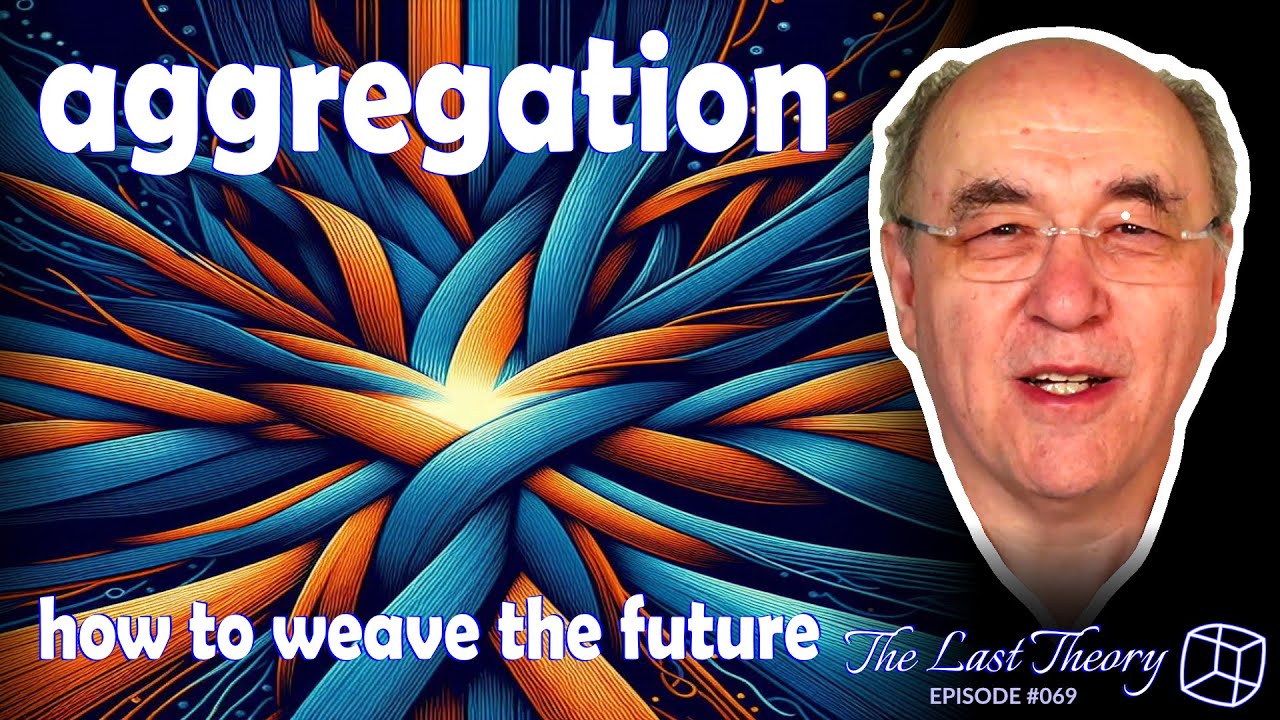Stephen Wolfram explains that the Wolfram model uses the process of equivalencing states to simplify complex possible histories, enabling us to perceive a coherent, unified experience despite multiple potential futures. He highlights that merging histories through causal invariance is fundamental to the universe’s evolution and consciousness, as our brains aggregate similar states to create the illusion of a single continuous reality.
The video features Stephen Wolfram discussing how the Wolfram model approaches the concept of aggregation and the weaving of the future. He explains that as an observer, the key operation is equivalencing states, where instead of generating entirely new states, one aggregates multiple states by ignoring their detailed differences. This process simplifies the complex web of possible states into a manageable form, allowing us to perceive a coherent experience despite the underlying multitude of potential histories.
Wolfram elaborates on the nature of consciousness, suggesting that our perception of a single, continuous thread of experience arises from this process of equivalencing. Although the universe may branch into many different histories or timelines, our consciousness effectively merges these branches into a single narrative. This merging occurs because many branches are identical or become identical over time, and our brains, as complex systems, aggregate these similar states into a unified perception, giving us the illusion of a singular experience.
A significant point he makes is that the idea of merging histories, in addition to branching, is often overlooked in quantum mechanics. While branching—where the universe splits into multiple possibilities—is well-understood, merging is less obvious, especially in continuous systems. Wolfram emphasizes that in discrete systems, merging is inevitable because different branches can evolve to the same outcome. This merging ensures consistency and coherence in the universe’s evolution, and understanding it requires viewing the universe as fundamentally discrete rather than continuous.
He discusses the concept of causal invariance, which he developed in the 1990s, as a formal underpinning of this merging process. Causal invariance means that regardless of the microscopic orderings or paths taken in the system’s evolution, the outcome remains the same. This property underpins the idea that different initial states or paths can lead to identical results, facilitating the merging of histories. Wolfram notes that causal invariance is a natural consequence of the rules governing the universe’s evolution, even if it can be technically complex to demonstrate in certain models.
Finally, Wolfram ties these ideas back to the nature of observation and consciousness. He explains that as observers, we perform an operation akin to equivalencing—aggregating states and ignoring detailed differences—to form a coherent experience. This process is reflected in neural activity, where neurons and networks develop consensus through connections and interactions. The aggregation and consensus-building processes are fundamental to how consciousness emerges from the underlying discrete computational universe, weaving together multiple possible futures into a single, unified experience.
